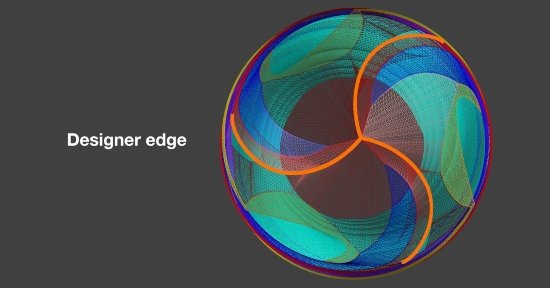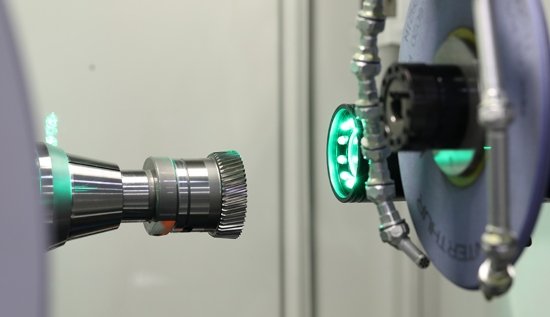The Challenges and Opportunities in EV Manufacturing
Xiaoyu Wang of ANCA discusses the new challenges in electric vehicle (EV) manufacturing, how EVs will impact the traditional automotive manufacturing industry, and the new opportunities in this global trend.

Xiaoyu Wang
Founded in the 1974 by two engineers, Pat Boland and Pat McCluskey, in Melbourne, Australia, ANCA has become an industry leader for CNC tool and cutter grinding machines, motion controls and sheet metal solutions. Known for its cutting edge technologies and continuous innovation, ANCA’s comprehensive product line includes the FX, MX and TX series CNC machines, as well as its latest integration and automation solutions with the ANCA Integrated Manufacturing System (AIMS). ANCA sells to a wide range of industries including aerospace, medical, automotive, electronics and tool manufacturers.
The company’s growth over the past 45-plus years has been driven by a series of innovations that have revolutionised the production of cutting tools and have impacted the whole of manufacturing. Due to the niche market that ANCA services, it exports 99% of its products with customers in over 45 countries. It has offices in the UK, Germany, China, Thailand, India, Japan, Brazil, and the United States, as well as a comprehensive network of representatives and agents worldwide.
In this interview with Asia Pacific Metalworking Equipment News (APMEN), Xiaoyu Wang, ANCA’s Product Manager for Gear Tool, discussed the new challenges presented by electric vehicle (EV) manufacturing, how EVs will impact the traditional automotive manufacturing industry, and the new opportunities in this global trend.
HOW HAS THE TREND TOWARD ELECTRIC VEHICLE (EV) PRODUCTION CHANGED THE AUTOMOTIVE MANUFACTURING LANDSCAPE AND WHAT ARE THE NEW CHALLENGES FOR MANUFACTURERS?
Xiaoyu Wang (XW): From a CNC tool and cutter supplier’s point of view, EV’s growth in the market is a challenge as well as a revolutionary opportunity. In 2017, 11.8 percent of cutting tool consumption was for automotive manufacturing. However, the rise of EVs and the associated manufacturing changes will significantly impact this. The machining time required for pure EVs will reduce by 50–75 percent compared with traditional internal combustion engines (ICEs). This will result in a decline in overall cutting tool consumption as ICE vehicles’ production stops. Recently, General Motors has pledged to stop making gasoline-powered vehicles by 2035.
Declining demand for cutting tools is an existential challenge, especially for our customers who serve the automotive industry. However, EVs also provide many opportunities. The new skiving cutters required for manufacturing the internal gears used in EV transmission is a significant one.
About 45 percent of all gear production is for vehicle transmission. EVs have changed the requirements for the gear industry. For example, the high engine speed of up to 20,000 rpm means a higher gear ratio is required to reduce the speed for efficiency. Additionally, the planetary gear system is more prevalent in the new electric transmission design.
In a planetary gear set, the external gears need to be ground, for which the current production process of hobbing and then grinding can easily accommodate. The problem is with the internal ring gear. Traditionally, the internal gears are produced with shaping or broaching; however shaping is slow while broaching relies on cumbersome tooling.
Efficiency poses multiple challenges, and EVs noise emission is also of a much higher priority for customers. Some drivers complain that an EV leaves a high pitch ringing in the ear even after driving. This means gears for EVs need to meet even tighter tolerances. As such the quality requirement has increased from DIN 10 to DIN 6 for the internal gears. The gear industry sees hard skiving as a revolutionary process to produce the millions’ internal ring gears needed for EVs.
To continue reading this article, head on over to our Ebook!
Check these articles out:
Thailand’s Roadmap To Become The Regional EV Hub By 2025
Sheet Metal Fabricator Cuts Inspection Time by 60%
Thailand Sets Sight on Industry 4.0
FARO Sees Bright Prospects in Automotive Manufacturing Industry
For other exclusive articles, visit www.equipment-news.com.
WANT MORE INSIDER NEWS? SUBSCRIBE TO OUR DIGITAL MAGAZINE NOW!
FOLLOW US ON: LinkedIn, Facebook, Twitter













